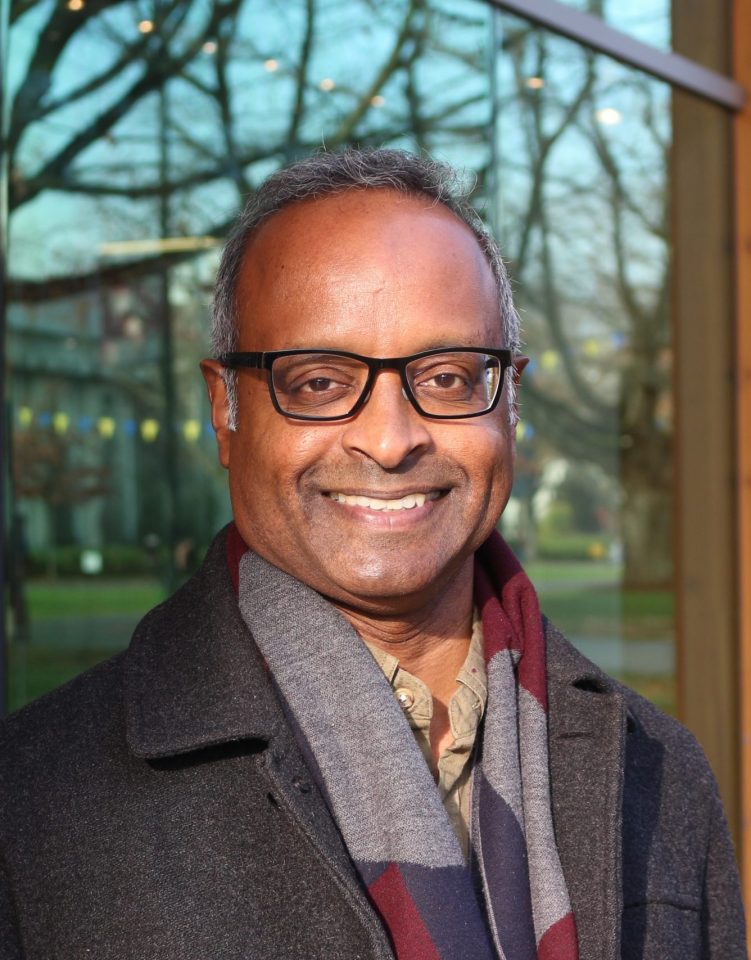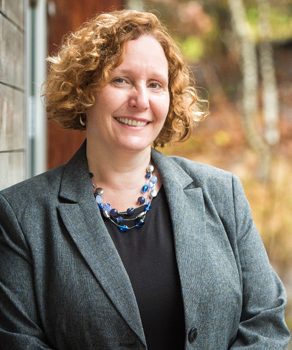
Imagine the scene – during the hiring process for new tenure-track faculty, a committee of faculty members stops by the search chair’s office to talk about the applications. The centre of the conversation is a candidate, a woman of colour, who has just received a prestigious award.
“What do you think were the major strengths of her application?” asks one of the professors. “Being a female visible minority probably didn’t hurt,” quickly answers a colleague.
This problematic scenario reflects an issue that candidates from marginalized groups may face when trying to access the job market in many universities in Canada and around the world. Thankfully, people are taking steps to prevent it from happening at UBC.
With the goal of raising awareness, UBC’s Faculty of Science is using examples based in real-world situations, like the one above, to encourage respectful and meaningful conversations amongst members of its department’s search committees.
Through a combination of training, data analysis and improved guidelines, Science is working to reduce the barriers that affect equity and diversity in faculty recruitment, and, ultimately, promote a workplace that is welcoming and inclusive for all.
“What we hope to achieve is that the diversity of our graduate and undergraduate students, as well as postdocs, is also reflected in our faculty,” says Ninan Abraham, Science’s Associate Dean, Equity and Diversity. “I hope to ensure that we shift the prevailing culture of exclusion. That is, unlike what we’d like to think, scientists are influenced by additional factors, like culture, upbringing or bias.”
Ninan is a highly regarded professor, cross-appointed with the departments of Zoology and of Microbiology and Immunology, who has been working to expand the equity and diversity lens in Science since 2018. A racialized faculty member, he was attracted to the role after experiencing for himself the hurdles imposed by structural bias.
After several years of successful grant applications and continuous funding, Ninan went through a revamped evaluation system and saw one of his grant applications being rejected at the first level of assessment.

Ninan Abraham has been working as the Faculty of Science’s Associate Dean, Equity and Diversity, since 2018.
“Having a gender vague name, I wondered if misperceptions about who I am and what my background is led to unconscious bias and to negative outcomes for my grants,” he recalls.
After looking at the literature, he learned that people with African-American names have a 13 per cent lower chance of being awarded funding from the National Institutes of Health in the U.S., and Asian-Americans have 4 per cent lower chance.
“That woke me up to some of the structural issues within science and how we determine what is meritorious,” Ninan says.
Tools to address bias
The Faculty of Science has been developing tools to advance equity and diversity for over ten years. Ninan’s predecessors created a system to track the representation of women in the faculty. This helped them to start an important conversation. In 2018, another layer was added to the system, allowing them to track additional equity groups, including people of colour and LGBTQ+ faculty, through anonymous self-disclosure.
In addition to talking to members of the hiring committees about diversity metrics, Ninan and his team organize discussions that are based on real ethical issues in order to engage even the most skeptical of faculty members.
“Some people say that they don’t want to be there because they’ve already attended training sessions in past years, but my answer to that is: biases don’t just go away, they are there, and you have to work on them continually,” says Ninan.
It’s not only current faculty who are in the conversation. Candidates are expected to articulate how they are committed to ensuring equitable or inclusive practices by submitting a diversity statement. This new requirement, created in consultation with UBC’s Equity & Inclusion Office, also expects candidates to illustrate how they see themselves realizing the university’s strategic goals.
The outcomes of the cultural shift in Science have been exciting, but Ninan acknowledges there is still a lot of work ahead. In the last hiring cycle, 38 per cent of Science’s tenure stream recruits were female, a percentage much higher than the average of 26 per cent between 2010 and 2017.
“I think change is incremental; there’s no way you can make a big shift all of a sudden. But I’m proud of the positive effects of our efforts and I’m optimistic,” Ninan says.
Collaboration enables campus-wide efforts
Because of Science’s robust efforts, Ninan has been invited to share his findings with other faculties. In conversations with the Faculty of Arts, he has learned that some of their departments already use diversity statements, so they were able to exchange best practices. As for the Faculty of Applied Science, their collaboration is so close that they jointly conducted surveys to better understand the working climate for faculty.
Another faculty that gets inspiration from Science is Medicine. The team started with a review of their recruitment guidelines to include elements that support equity, diversity and inclusion, and implemented an unconscious bias online training module for members of the selection committees.
In addition, Medicine works with departments to ensure that their job postings have inclusive language. They advertise on a wide range of channels, reaching potential candidates from diverse groups.
“Our practices are important to ensure equity and inclusion are considered in all opportunities in the Faculty of Medicine,” says Christine Speers, Medicine’s Organizational Development Manager.
This year, the faculty created a new role, Assistant Dean, Equity, Diversity and Inclusion, to ensure the processes and systems promote diversity as well as to support an equitable and inclusive working environment. “We will continue to create a working environment that inspires innovation, strengthens academic and operational affiliation, and fosters agility through the diversity of our members,” Christine says.
In collaboration with the senior advisors to the provost on women and racialized faculty, the Equity & Inclusion Office works hard to encourage faculties and schools to think critically, and promote change.

Sara-Jane Finlay, UBC’s Associate Vice-President, Equity & Inclusion.
“The last 20 years have seen only incremental progress in the diversification of our faculty. While women and racialized men have made some progress; racialized women, Indigenous peoples and faculty with disabilities remain significantly under-represented within faculty ranks and particularly in leadership roles,” says Sara-Jane Finlay, Associate Vice-President, Equity & Inclusion.
“We are encouraging departments to do things a bit differently and to use some of the mechanisms such as preferential or limited searches or long term search strategies that cultivate potential diverse recruits.”
The university’s commitment to cultivating a diverse community was captured in the strategic plan: Shaping UBC’s Next Century under Strategy 4 (Inclusive Excellence), and is being expanded by the creation of the Inclusion Action Plan, which is expected to be launched in early 2020. It is also represented by Catalyst #1 of the Focus on People 2025 framework.
Through combining all these collaborative efforts, UBC is taking steps towards building a more diverse, inclusive, safe and vibrant workplace, where people feel they can thrive.